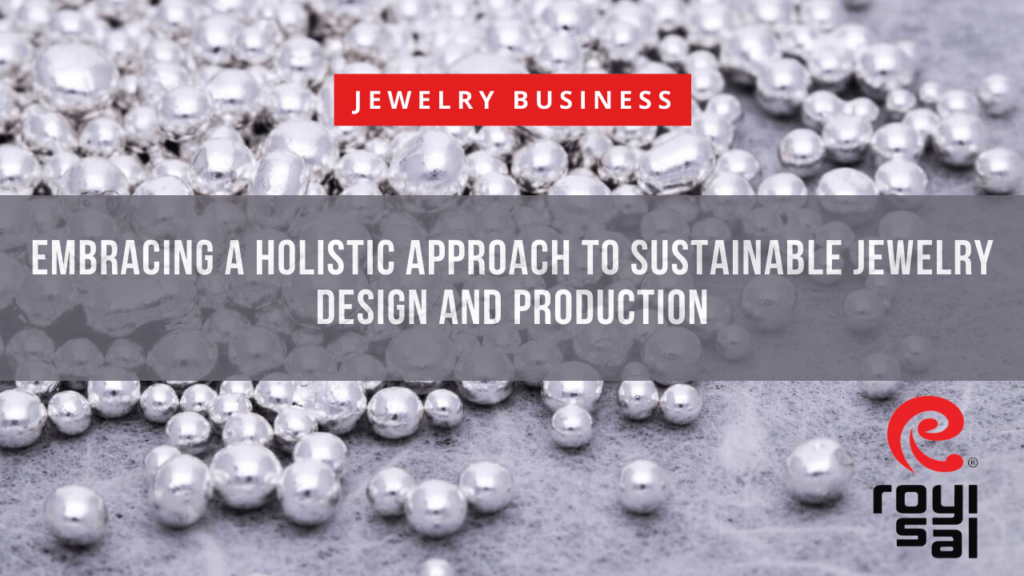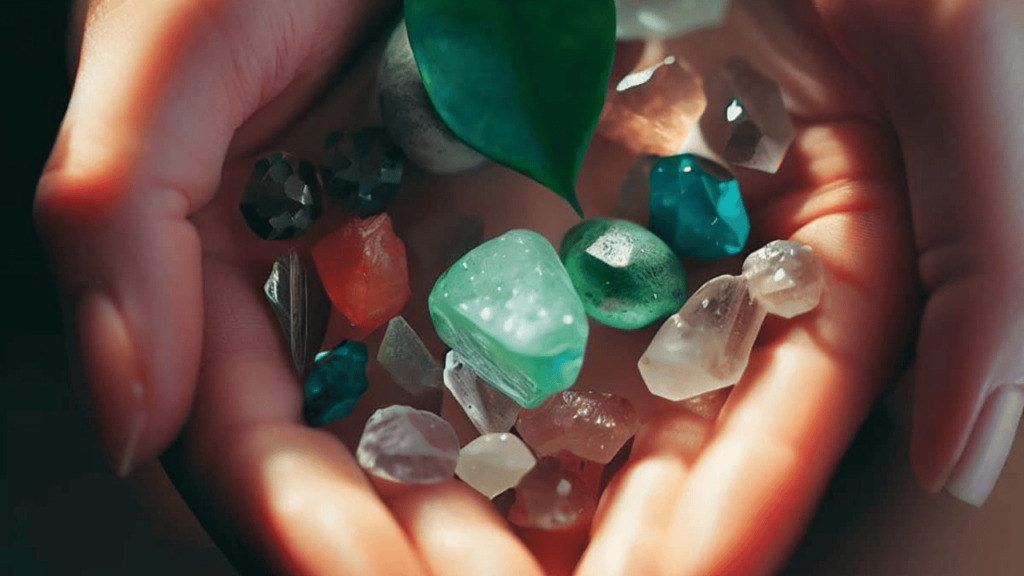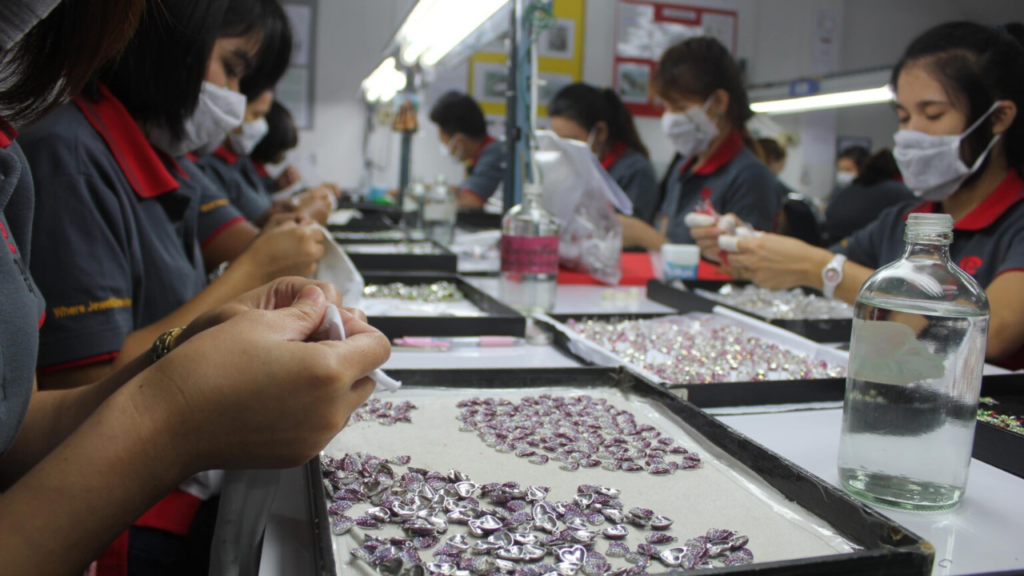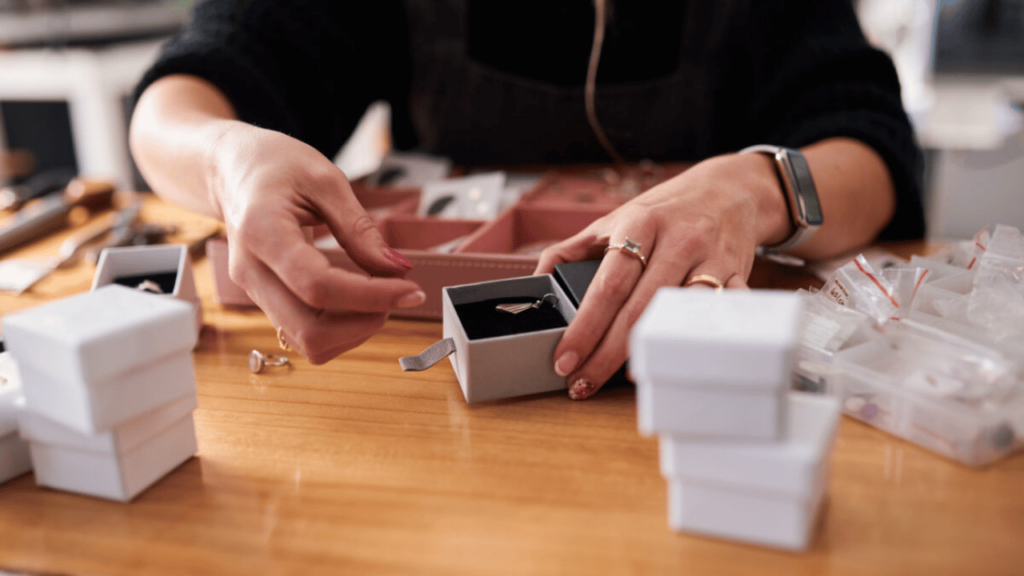
Jewelry: It’s often seen as a symbol of luxury and beauty. But did you know it can also harm the environment? From mining precious metals to the final product, the jewelry industry leaves a big footprint.
To create truly beautiful and responsible jewelry, we need a holistic approach. This means considering every step of the process, from design to disposal. By doing this, we can protect our planet and ensure fair treatment for everyone involved.
It’s time for a change. A holistic approach is the key to creating jewelry that’s both stunning and sustainable.
Embracing a Holistic Approach to Sustainable Jewelry Design and Production
Understanding Sustainability in Jewelry

Defining Sustainability in the Jewelry Industry
Sustainability in the jewelry industry means creating beautiful pieces while minimizing harm to the environment and people. It’s about finding a balance between economic growth, social responsibility, and environmental protection. This involves making conscious choices at every stage of the jewelry’s lifecycle, from sourcing materials to the final product.
Key Pillars of Sustainability: Environmental, Social, and Economic
Sustainability in jewelry rests on three core pillars:
- Environmental: Protecting our planet by reducing waste, conserving resources, and minimizing pollution throughout the jewelry production process. This includes using recycled materials, minimizing water and energy consumption, and ensuring safe disposal of waste.
- Social: Upholding fair labor practices, respecting human rights, and supporting the well-being of workers involved in jewelry production. This encompasses fair wages, safe working conditions, and ethical treatment of all individuals in the supply chain.
- Economic: Ensuring the long-term viability of the jewelry industry by creating sustainable business models, supporting local communities, and promoting fair trade practices. This involves fair pricing, responsible business practices, and investing in the future of the industry.
The Role of Ethical Sourcing in Sustainable Jewelry
Ethical sourcing is a cornerstone of sustainable jewelry. It involves tracing materials back to their origin and ensuring they were obtained responsibly. This means avoiding conflict minerals, supporting fair labor practices in mining, and choosing recycled or responsibly mined metals and gemstones. By prioritizing ethical sourcing, jewelers contribute to a more just and sustainable world.
The Design Process: A Sustainable Foundation

Eco-friendly Materials and Their Benefits
Choosing eco-friendly materials is crucial for sustainable jewelry design. These materials have a lower environmental impact throughout their lifecycle, from extraction to disposal. Some popular options include:
– Recycled metals: Using recycled gold, silver, and platinum reduces the need for new mining, conserving resources and energy.
– Lab-grown gemstones: These synthetic stones offer stunning beauty without the environmental and ethical concerns associated with traditional mining.
– Organic materials: Incorporating natural elements like wood, bone, and plant-based resins adds unique character while minimizing ecological footprint.
– Fair-trade and conflict-free metals and stones: Supporting ethical sourcing ensures that miners and workers are treated fairly and that the materials are not linked to harmful practices.
Minimalist and Timeless Design Principles
Less is often more when it comes to sustainable jewelry. Minimalist designs focus on clean lines, simple shapes, and enduring elegance. Timeless pieces are designed to withstand the test of time, reducing the need for frequent replacements and waste. By embracing these principles, jewelers can create pieces that are both aesthetically pleasing and environmentally responsible.
Reducing Waste in the Design Phase
Minimizing waste starts with the design process. By carefully planning and optimizing designs, jewelers can reduce material consumption and generate less scrap. Some strategies include:
– Computer-aided design (CAD): Using digital tools to create and refine designs helps to reduce material waste during prototyping.
– Modular design: Creating pieces with interchangeable components extends the lifespan of jewelry and reduces the need for complete replacements.
– Efficient material utilization: Optimizing the use of materials through careful planning and craftsmanship can significantly minimize waste.
The Importance of Durability and Repairability
Creating jewelry that lasts is essential for sustainability. Durable pieces reduce the need for frequent replacements, while repairable designs extend the jewelry’s lifespan. By focusing on quality craftsmanship and using sturdy materials, jewelers can create pieces that are built to last. Additionally, offering repair services helps to keep jewelry out of landfills and promotes a circular economy.
Production: Ethical and Eco-Conscious

Fair Labor Practices in the Jewelry Supply Chain
Ensuring fair labor practices throughout the jewelry supply chain is essential for creating ethical and sustainable pieces. This includes:
– Fair wages: Workers at all levels should receive living wages that meet their basic needs.
– Safe working conditions: Jewelry production facilities should prioritize worker safety and health.
– No child labor: The use of child labor is strictly prohibited in any part of the supply chain.
– Respect for human rights: Workers should be treated with dignity and respect, free from discrimination and exploitation.
Sustainable Production Techniques and Technologies
Adopting sustainable production methods can significantly reduce the environmental impact of jewelry making. This includes:
– Energy efficiency: Implementing energy-saving technologies and practices in production facilities.
– Water conservation: Minimizing water usage in jewelry production processes.
– Waste reduction: Implementing waste management strategies to reduce and recycle waste materials.
– Clean technologies: Using environmentally friendly chemicals and processes in jewelry manufacturing.
Minimizing Environmental Impact During Production
Reducing the environmental footprint of jewelry production requires careful consideration of several factors:
– Pollution control: Implementing measures to reduce air, water, and soil pollution caused by jewelry manufacturing.
– Hazardous materials: Minimizing the use of harmful substances in jewelry production and disposal.
– Resource conservation: Efficiently using materials and energy throughout the production process.
– Responsible waste disposal: Proper handling and disposal of hazardous waste generated during jewelry production.
Certifications and Standards for Sustainable Jewelry
Adhering to certifications and standards is a crucial step in ensuring the sustainability of jewelry. These certifications provide consumers with confidence in the ethical and environmental practices of jewelry brands:
- Fairtrade Gold: Guarantees that gold is sourced from mines that meet strict social and environmental standards.
- Responsible Jewellery Council (RJC): Sets ethical, social, and environmental standards for the jewelry industry.
- Global Recycled Standard (GRS): Certifies that recycled materials have been processed responsibly.
- Other certifications: Depending on the specific materials and processes involved, additional certifications may be relevant.
Distribution and Consumption: Completing the Cycle
Sustainable Packaging and Shipping

Choosing eco-friendly packaging and shipping methods is essential for minimizing the environmental impact of delivering jewelry to consumers. This includes:
– Recycled and biodegradable materials: Using packaging made from recycled or compostable materials.
– Minimal packaging: Reducing the amount of packaging used to protect jewelry.
– Sustainable shipping practices: Opting for carbon-neutral or low-emission shipping options.
Educating Consumers About Sustainable Jewelry
Raising consumer awareness about sustainable jewelry is crucial for driving demand and creating a market for ethical and eco-friendly products. This involves:
– Transparency: Clearly communicating the brand’s sustainability practices to consumers.
– Education: Providing information about the environmental and social impacts of the jewelry industry.
– Consumer engagement: Encouraging consumers to make informed choices and support sustainable brands.
The Role of Transparency and Traceability
Transparency and traceability are essential for building trust with consumers and ensuring the authenticity of sustainable claims. This involves:
– Supply chain transparency: Disclosing the origin of materials and the production process.
– Traceability: Providing consumers with information about the journey of their jewelry.
– Certifications: Sharing details about any certifications or standards the brand adheres to.
Encouraging Jewelry Care and Repair
Promoting jewelry care and repair extends the lifespan of pieces and reduces waste. This includes:
– Care instructions: Providing guidance on how to properly care for jewelry to maintain its appearance.
– Repair services: Offering repair options to extend the life of damaged jewelry.
– Take-back programs: Implementing programs to recycle or repurpose old jewelry.
Conclusion: A Brighter Future for Jewelry
Creating sustainable and ethical jewelry requires a holistic approach that considers every stage of the product’s lifecycle. From design to disposal, conscious choices must be made to minimize environmental impact and ensure fair labor practices. By embracing a holistic perspective, the jewelry industry can move towards a more responsible and sustainable future.
The jewelry industry has the power to be a force for good. By adopting sustainable practices, jewelers can contribute to environmental protection, social justice, and economic prosperity. With increasing consumer awareness and demand for ethical products, there is a growing opportunity for the industry to transform and thrive.
To create a truly sustainable jewelry industry, collaboration is key.
- Consumers: Choose jewelry brands that prioritize sustainability and ethical practices. Support fair trade and recycled materials, and care for your jewelry to extend its lifespan.
- Designers: Embrace eco-friendly materials, minimalist designs, and durable construction. Prioritize ethical sourcing and fair labor practices throughout the supply chain.
- Producers: Invest in sustainable technologies and practices to reduce environmental impact. Ensure fair wages and safe working conditions for employees.
At Royi Sal Jewelry, we are fully committed to doing our best effort to reduce our impact on the environment and uphold sustainability in the jewelry industry. We exemplify a holistic approach throughout our jewelry-making journey. We prioritize recycled silver, reducing environmental damage from mining. Additionally, our closed-loop system recycles scrap silver into new pieces, minimizing waste and resource consumption.
Royi Sal Jewelry Manufacturer is a supplier of sustainable jewelry and especially welcomes brands and clients who wish to have their jewelry manufactured from 100% ethical, recycled, and sustainably sourced Silver.
Join our mission towards a greener earth and learn more about having your jewelry manufactured with recycled Silver. If you are interested in becoming a partner, you can request details via email at [email protected]. Our jewelry experts are ready to provide advice and guidance every step of the way, from design to production and delivery, to help bring your ideas to life.
Share this post

